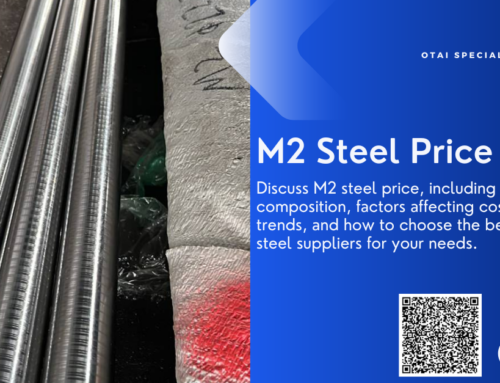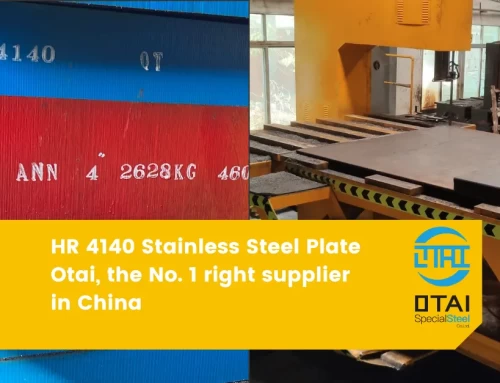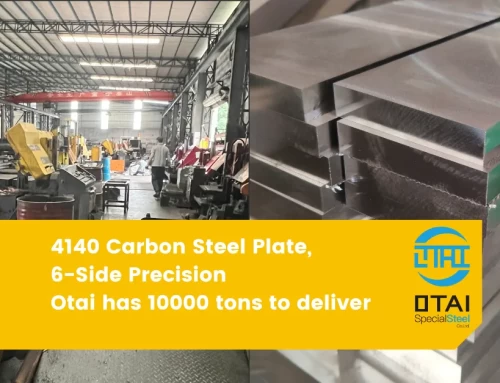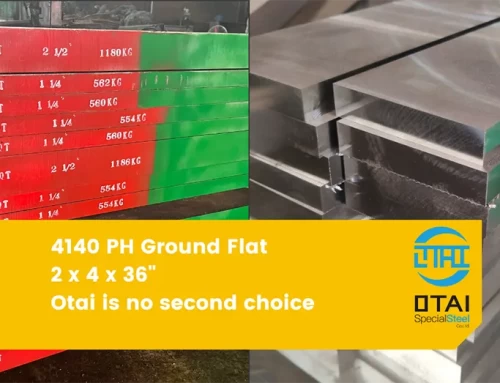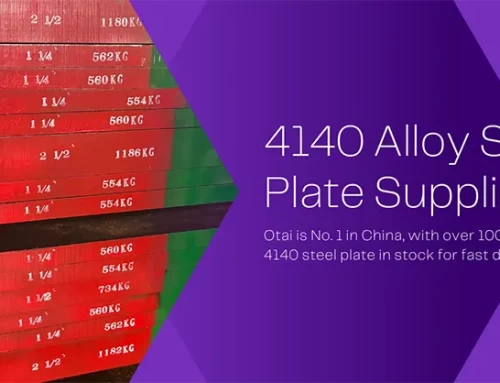You may also don’t know SAE and AISI different steel grades and names. This post will solve some confusion and you will know what’s the difference and how to check SAE and AISI steel grades.
Origin of the Coding System
The early 1940’s witnessed the development of a coding system for the classification of different types of steels. Designers, heat treaters, draftsmen, and engineers were able to obtain specific information on the types of steel along with its grades. The coding system is known for its efficient classification of steels as it uses the standards from the American Iron and Steel Institute (A.I.S.I.) and the Society of Automotive Engineers (S.A.E.).
Alloy steels and carbon steels for a number of years were designated with specific grades by a four-digit SAE/AISE numerical index system. Grades for alloy steels and carbon steels were identified by this system based on standard chemical compositions. A discontinuity in the relationship between grade designations and the AISI occurred as a result of the decision made by the AISI to stop writing material specifications.
Grading of AISI Materials
A basic four-digit system is used by the SAE steel system to designate the chemical composition of alloy steels and carbon steels. There is a possibility that AISI grades are quoted as SAE steel grades and very often the same steel identification number is present in AISI/SAE standards. A four-digit number is usually given to the AISI alloy steels and carbon steels. The alloying element in the AISI specification is indicated by the first two digits and the amount of carbon is indicated by the last two digits.
The chemical composition of alloy steels and carbon steels is further explained in the figure given below through a schematic representation of the AISI/SAE steel designation system.
Schematic Representation of AISI/SAE Steel Designation System
Stainless steels are also included in the AISI steel specifications range. The stainless steels are provided with three digit numbers starting with 2, 3, 4, or 5. The 300 series austenitic stainless grades and the 400 series martensitic grades are the popular stainless steel specifications.
Given below is a table of AISI material grades explaining the steel type indicated by each four digit number along with its specifications.
Table 1. AISI Material Grades
| AISI Steel | Specifications | |
| Carbon Steel | 10XX | Plain carbon steel , Mn 1.00% max |
| 11XX | Resulfurized free cutting | |
| 12XX | Resulfurized – Rephosphorized free cutting | |
| 15XX | Plain carbon steel, Mn 1.00-1.65% | |
| Manganese Steel | 13XX | Mn 1.75% |
| Nickel Steel | 23XX | Ni 3.50% |
| 25XX | Ni 5.00% | |
| Nickel Chromium Steel | 31XX | Ni 1.25%, Cr 0.65-0.80% |
| 32XX | Ni 1.75%, Cr 1.07% | |
| 33XX | Ni 3.50%, Cr 1.50-1.57% | |
| 34XX | Ni 3.00%, Cr 0.77% | |
| Molybdenum Steel | 40XX | Mo 0.20-0.25% |
| 44XX | Mo 0.40-0.52% | |
| Chromium Molybdenum Steel | 41XX | Cr 0.50-0.95%, Mo 0.12-0.30% |
| Nickel Chromium Molybdenum Steel | 43XX | Ni 1.82%, Cr 0.50-0.80%, Mo 0.25% |
| 47XX | Ni 1.05%, Cr 0.45%, Mo 0.20-0.35% | |
| Nickel Molybdenum Steel | 46XX | Ni 0.85-1.82%, Mo 0.20-0.25% |
| 48XX | Ni 3.50%, Mo 0.25% | |
| Chromium Steel | 50XX | Cr 0.27-0.65% |
| 51XX | Cr 0.80-1.05% | |
| 50XXX | Cr 0.50%, C 1.00% min | |
| 51XXX | Cr 1.02%, C 1.00% min | |
| 52XXX | Cr 1.45%, C 1.00% min | |
| Chromium Vanadium Steel | 61XX | Cr 0.60-0.95%, V 0.10-0.15% |
| Tungsten Chromium Steel | 72XX | W 1.75%, Cr 0.75% |
| Nickel Chromium Molybdenum Steel | 81XX | Ni 0.30%, Cr 0.40%, Mo 0.12% |
| 86XX | Ni 0.55%, Cr 0.50%, Mo 0.20% | |
| 87XX | Ni 0.55%, Cr 0.50%, Mo 0.25% | |
| 88XX | Ni 0.55% Cr 0.50% Mo 0.35% | |
| Silicon Manganese Steel | 92XX | Si 1.40-2.00%, Mn 0.65-0.85% Cr 0.65% |
| Nickel Chromium Molybdenum Steel | 93XX | Ni 3.25%, Cr 1.20%, Mo 0.12% |
| 94XX | Ni 0.45%, Cr 0.40%, Mo 0.12% | |
| 97XX | Ni 0.55%, Cr 0.20%, Mo 0.20% | |
| 98XX | Ni 1.00%, Cr 0.80%, Mo 0.25% |
Understanding of the SAE/AISI Steel Numbering Designation System
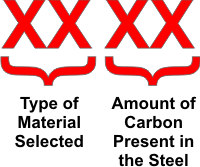
Given below is a table illustrating the four-digit index classification of alloy steels by the SAE-AISI system.
Table 2. Four-Digit Index Classification of Alloy Steels
| SAE designation | Type |
| 1xxx | Carbon steels |
| 2xxx | Nickel steels |
| 3xxx | Nickel-chromium steels |
| 4xxx | Molybdenum steels |
| 5xxx | Chromium steels |
| 6xxx | Chromium-vanadium steels |
| 7xxx | Tungsten steels |
| 8xxx | Nickel-chromium-vanadium steels |
| 9xxx | Silicon-manganese steels |
The first digit of AISI/SAE Steel Designation represents a general category grouping of steels. This means that 1xxx groups within the SAE-AISI system represent carbon steels. Because of the variations in some of the fundamental properties among the carbon steels, they are further divided into four classes. Thus the plain carbon steels are represented within the 10xx series containing a maximum of 1.00% Mn, resulfurized carbon steels are represented within the 11xx series, resulfurized and rephosphorized carbon steels are represented within the 12xx series, and non-resulfurized high-manganese (up-to 1.65%) carbon steels are represented in 15xx series. The non-resulfurized high-manganese carbon steels are developed for ensuring better machinability.
The second digit of the series indicates the presence of major elements, which may affect the properties of the steel. For example in 1018 steel, the zero in the 10XX series depicts that major secondary elements such as sulfur, are not present. Sulfur in the steel ensures better machinability, but all free machining agents such as sulfur, lead, calcium, etc., are not clean or directly taken from the earth. These free machining elements do not completely homogenize during the steel making process and can also cause stringers, pockets or other faults which can affect some of the properties of the steel.
The last two digits indicate that the carbon concentration is 0.01%. For instance,
SAE steel 1018 indicates non-modified carbon steel containing 0.18% of carbon.
SAE steel 5130 indicates a chromium alloy steel containing 1% of chromium and 0.30% of carbon.
An additional letter is sometimes added between the second and third digits of the code groups such as 11L41, 12L14 or 50B40. The letter L indicates the addition of lead (between 0.15% and 0.35%) to improve the machinability of the steel. The letter B indicates the addition of boron (between 0.0005% and 0.003%) to low carbon steels to enhance the hardness of the steel. Further, the merchant quality steels used as hot-rolled steels bars in production of non- critical parts of machinery and structure are designated with prefix M. The alloy steels with prefix E indicate electric furnace steel and suffix H indicate that the steel has been produced to the required hardenability limits.
Source: www.azom.com

